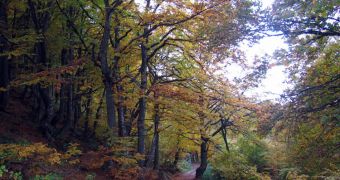Researchers from the United States Geological Survey (USGS) found in a new study that the forests covering the southwestern parts of the country will experience the effects of global warming and climate change with more severity than other forests will.
Working together with colleagues at the University of Arizona and other partner organizations, the study group was able to combine a series of data to reach this conclusion. In the model, they combined tree ring records with historical and climate data, and spiced it all up with computer projections.
The simulation produced a grim image of the future, which is detailed in a paper entitled “Temperature as a potent driver of regional forest drought stress and tree mortality.” The work is published in this week's issue of the top scientific journal Nature Climate Change.
Experts from the US Department of Energy's (DOE) Los Alamos National Laboratory (LANL), the Columbia University, in Ithaca, New York, and the University of Tennessee, were a part of the team.
One of the most significant implications of the new research is that substantial changes in forest and species distributions will occur over the coming decades, if the Southwest becomes warmer and drier.
These effects are very likely to be widespread, and to cause significant repercussions elsewhere, too. During the study, investigators used temperature and moisture data cover more than 13,000 tree core samples in the same database as historical data about famous droughts or floods.
“The strength of this study is the integration of scientific tools to understand the future of an important regional ecosystem under stress from climate change,” USGS Director Marcia McNutt explains.
“By combining historical records extending back one thousand years to understand the relationship between climate and forest health, statistical and ecological studies to tease out which climatological variables matter most to forest growth, and computer models of regional climate, the result is a prediction of declining prospects for southwestern forests,” she goes on to say.
All the information collected from this study was put together in a dataset called the Forest Drought Stress Index, which researchers plan to update as new data become available.

 14 DAY TRIAL //
14 DAY TRIAL //